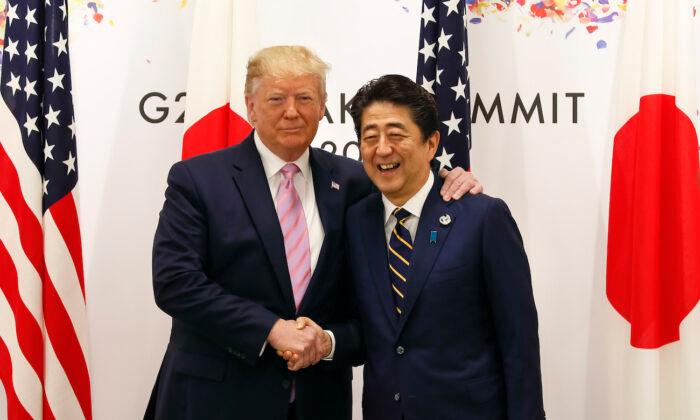Beijing officially applied to join the Comprehensive and Progressive Trans-Pacific Partnership (CPTPP). However, experts said the possibility of getting approved was quite low due to high entry standards and China’s unfair market practices.
On Sept. 16, China’s commerce minister, Wang Wentao, submitted a written application for CPTPP membership to Damien O'Connor, Minister for Trade and Export Growth of New Zealand, the depository state of the deal.
One day later, China’s foreign ministry spokesman, Zhao Lijian, said at a press briefing that China’s entry would enhance regional economic integration in the Asia-Pacific region, as well as boost global recovery from the pandemic.
However, the Chinese Communist Party (CCP) faces strong resistance, especially from high CPTPP standards in the forefront, said The Epoch Times columnist Wang He. “Some of the core clauses pose challenges to the CCP,” Wang said.
Chances ‘Close to Zero’
Vice chair of state-run Academy of China Council for the Promotion of International Trade, Zhao Ping, told state media China News Service on Sept. 16 that China was favorably considering the bid, which was meant to “boost domestic reform and growth at a high level.”However, Japan’s deputy finance minister posted a tweet on Sept. 17 that said “chances that it [China] can join are close to zero,” considering China’s subsidies of state-owned firms and arbitrary application of the law.
Under the CPTPP, member states are expected to help create a consistent, transparent, and fair environment to do business in their markets, for example, when they deal with their own state-owned enterprises.
Australian Trade Minister Dan Tehan said that China would have to meet the agreement’s high standards and its World Trade Organization commitments, and “fully implement its commitments under the Agreement in good faith,” according to a Sept. 17 article in The Australian Financial Review.
The article suggests that China’s bans and restrictions on $20 billion worth of Australian exports including beef, wine, and barley over the last year would be seen as a breach of that agreement.
After Australia pushed for an independent probe into the origins of the coronavirus outside of the WTO in April 2020, China has carried out an array of bans on Australian exports, making them much less competitive in the Chinese market. Since then, the two countries have not reopened ministerial talks due to diplomatic tensions.
To join the bloc, China needs to seek the support of its existing 11 member states. They are Japan, Canada, Australia, New Zealand, Malaysia, Singapore, Vietnam, Brunei, Mexico, Chile, and Peru.
In the United States, a spokesperson for the U.S. State Department, when asked to comment on China’s bid, hoped that China’s non-market trade practices and use of economic coercion against other countries would “factor into CPTPP parties’ evaluation of China as a potential candidate for accession.”Wendy Cutler, vice president of the Asia Society Policy Institute and a former acting deputy U.S. Trade Representative, said China’s membership in the group isn’t assured given its trade regime and direction toward more central control of its economy.
“It’s extremely difficult, if not impossible, to see how they could embrace the CPTPP rules governing state-owned enterprises, labor, e-commerce, the free flow of data, among others, as well as comprehensive market access commitments,” she said on Sept. 16 according to Bloomberg.
Moreover, Wang noted the move suggested a well-planned CCP control scheme.“If communist China, already a member of RCEP [The Regional Comprehensive Economic Partnership], could join the CPTPP, it could draw on the two to drive the CCP-oriented Asia-Pacific trade area,” Wang said. “That would serve as a card up its sleeve.”
At the same time, the analyst warned that once China gained the membership, it would likely “gut the CPTPP from the inside,” as it had done with the WTO after its entry in 2001.





